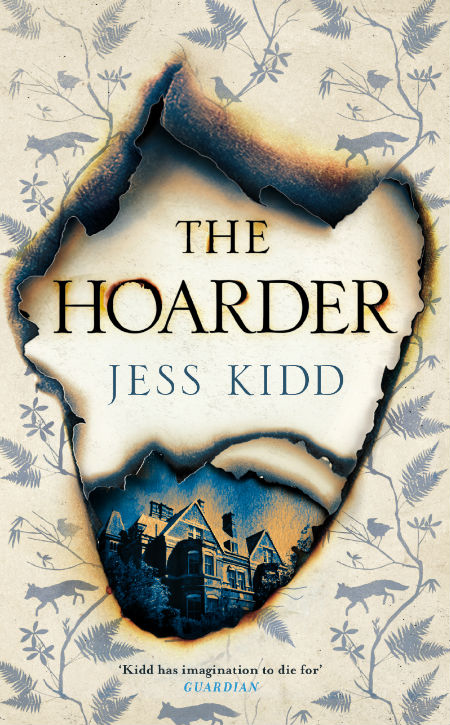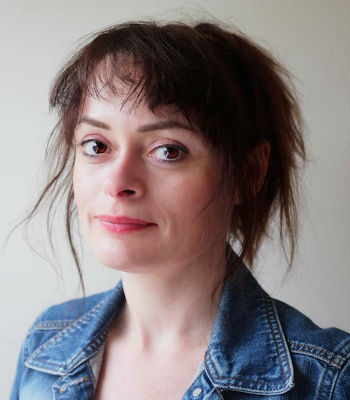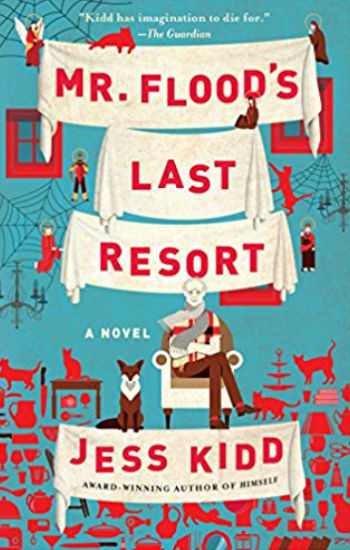
One of the first things that strikes you within a few words of diving into the wonders of The Hoarder is how exquisitely well Jess Kidd writes.
She is that rare talent who can spin the most lusciously poetic of phrases and yet never once lose the kind of grounded emotional evocation that is at the heart of any good story.
Even as you gasp in admiration at the sheer beauty of her writing, you come to know the characters in the book deeply and well, proving that it is possible to be dazzlingly good wordsmith and not rob your novel of the sort of accessibility necessary for readers to truly identify with your work.
Take opening paragraph from the novel which in no time flat, and with words that practically sing and dance off the page, introduce us to the mysterious Cathal Flood whose hermitic lifestyle in the grand old, rubbish-clogged home of Bridlemere is central to the grandly lyrical narrative of The Hoarder:
“He has a curious way of moving through his rubbish. He leans into it, skimming down the corridors like a fearless biker on a hairpin bend. He gallops and vaults through the valleys and hills, canters and bobs through the outcrops and gorges of his improbably hoardings. Now and then he stops to climb over an obstacle, folding his long legs like picnic chairs. And all the while his chin juts up and out and his body hangs beneath it, as if his grizzled jaw is wired to an invisible puppeteer.” (P. 1)
In contrast, the latest in a long line of caregivers, Maud Drennan, who succeeds where many others fail in forging a connection with the irascible old Irishman (it helps that she too hails from the Emerald Isle), is not quite as lithe or graceful, despite being half her client’s age:
“I don’t move like that. I wade, tripping over boxes and piles of mildewing curtains, getting caught in cables, hooked on hat stands and assaulted by rutting ironing boards. I flounder over records, books, stained blankets, greasy collections of plastic bags, garden forks, antique mangles, a woman’s patent leather shoe and unopened blender that also grates and peels. And cats, cats, cats.” (p. 1)
Both characters leap, fully-formed, into our reader’s minds eyes in a paragraph each, testament to how elegantly and economically Kidd writes without once sacrificing an iota of the languorous mystery that suffuses this magnificent piece of work from start to finish.
Both Cathal and Maud, different though they may be in their own ways, have an innate likability about them, and even though there is much about her client that unsettles her with accusations of murder, kidnapping and all manner of questionable activities possibly associated with him, she persists in her latest assignment, spurred on by her landlady Renata, a deliciously theatrical transgender woman with a salacious love of a good mystery, real or imagined.
Together, along with a man who identifies as Cathal’s previous caregiver Sam Hebden, who may or may be who he says he is, they attempt to get to the bottom of whether the grouchy old hoarder, who is at desperately poisonous odds with his son Gabriel, really did kill his wife Mary, abduct a girl called Maggie Dunne from a children’s home in Dorset and whether all the supernatural goings-on in the home, which deliver Maud all kinds of clues for her quest, point to Cathal or someone else entirely.

This engaging mystery of many interlinking, decades-old layers provides the narrative momentum for The Hoarder, in which Maud encounters the confoundingly supernatural, the diabolically all-too-human and the darkly familial, all in the service of a story that is much more than a gothic whodunnit.
In fact, for all the mysteriousness of Cathal, the unfathomable darkness of his son and the grandly twisted home in which much of the story takes place, the real heart of The Hoarder is the burgeoning, oft-grudging relationship between Maud and Cathal who is far softer and more eager for human connection than he first appears.
While he tries his usual spiteful bluster and nastiness with Maud, she is largely unfazed – I say largely because there are times when the sheer weirdness of Cathal and his almost-possessed home threaten to overwhelm Maud’s gutsy willingness to hang in there – and sticks at her cleaning up of his hoarded junk pile and her caring for a man who seems to care not if he’s loved or not but who, like many hurt and angry people, wants the very thing he claims to despise.
“What we really need is some kind of celestial truth drug, a bolt of revelatory lightning strong enough to unearth Bridlemere’s secrets. I imagine the house hurling all manner of clues at us: train timetables, diaries, a full range of murder weapons. Ghosts would drift out from every corner, grave-eyed and rubbing their cold little hands, ready to give sworn statements. Every last one of the family’s skeletons would be accounted for: out they would come, with their bones numbered, chattering their teeth and pointing their bony fingers.” (P. 206)
Theirs is a relationship of people more similar than they care to admit, with Maud nursing recollections of the disappearance some three decades earlier of her sister Deidre at an isolated beach, a loss that she has clearly not quite gotten over and which perhaps, powers her willingness to get the bottom of Cathal’s messy life of lost loves, family members and semblance of a normal life.
Beyond the heartwarming humanity of The Hoarder, which speaks to the innate humanity and need for meaningful connection in all of us, there is a delightful urban magicality at work with Maud accompanied by a number of ghostly saints, all of whom have their own rather forthright opinions on how she should proceed, both in her unexpectedly close friendship with Cathal, and the wider mystery of her life.
It’s never fully explained if the saints are real, or mere figments of her subconscious or if the poltergeist-generated scenes that punctuate the storyline are as tangible as the wall of National Geographics that separates Cathal’s private quarters from the rest of the house, but in the end it really matter since the heart of the book is how closely Maud and Cathal grow and how that plays a huge part in the way the final events of the book play out.
Suffice to say that Kidd balances the magical and the everyday with aplomb, mixing together the supernatural and the mundane with dizzyingly breathtaking style, her words richly otherworldly and gorgeously entrancing at every turn.
The Hoarder is a beautiful book, possessed of the kind of humanity in the friendship between Cathal and Maud (and also Maud and Renata) that is sorely lacking in the lives of many of the other people in the book, all of whom, for one reason or another have chosen life options far darker and more self-serving than the two appealing protagonists.
It is impossible to walk away from this book without the poetry of it all happily subsuming you, proof, if ever you needed it, that life can be both magical and grounded, uplifting and grim all at once, and that for all the darker places and twisted urges that something quite wonderful can emerge, even if only for a moment.
